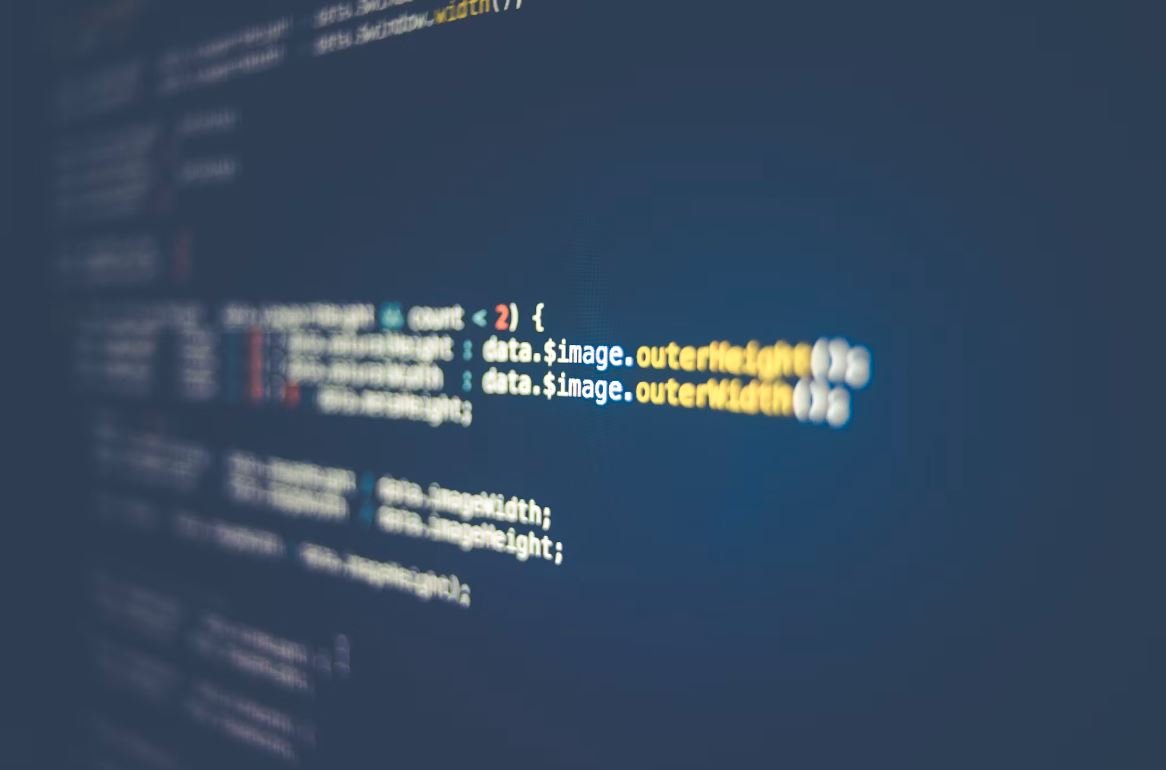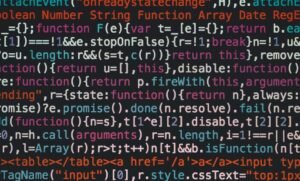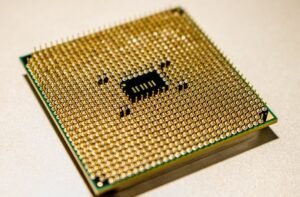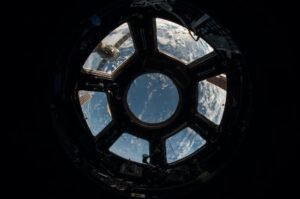Is AI Art Ethical?
Artificial Intelligence (AI) has made significant advancements in various fields, including art. AI-generated art has gained attention and popularity, sparking debates about its validity and ethics. As AI creates paintings, music, and other forms of artistic expression, questions arise about the role of human creativity and authorship. This article examines the ethical implications surrounding AI art and the implications for artists and society.
Key Takeaways
- AI-generated art challenges the traditional notions of human creativity and authorship.
- The use of AI in art raises questions about intellectual property rights and ownership.
- The impact of AI art on the art market is both disruptive and transformative.
- AI-generated art can amplify biases present in the training data, leading to unintended consequences.
- Ethical frameworks and guidelines need to be developed to navigate the emergent field of AI art.
**Art generated by artificial intelligence blurs the line between human and machine creation**. While AI algorithms can produce art that is indistinguishable from human-made art, the process and intention behind AI-generated art differ greatly. AI systems learn from vast amounts of data and use complex algorithms to generate original creations. However, the ability to learn and mimic artistic styles does not equate to creativity or the human experience of art.
AI art presents an **interesting conundrum when examining questions of authorship**. Traditional artists invest their time, skill, and subjective interpretation into their creations. With AI-generated art, the human element of artistic expression is arguably absent, raising concerns about the authenticity and value of these creations. Who can be considered the original creator of AI-generated art?
| AI Art | Traditional Art |
|---|---|
| Generated by algorithms and machine learning. | Created by human artists using their skills and creativity. |
| Can be mass-produced and duplicated easily. | Each piece is unique and often limited in production. |
| Does not possess personal experiences or emotions. | Reflects the artist’s emotions, thoughts, and experiences. |
Another important consideration is the **impact of AI-generated art on the art market**. The ability of AI to produce art that is visually appealing challenges the notion of scarcity and uniqueness that drives the value of traditional art. With AI-generated art, multiple copies can be produced effortlessly, potentially flooding the market and diminishing the value of original artworks.
**AI algorithms are not immune to biases**. When trained on datasets that already contain biases, such as gender or racial biases, AI systems can inadvertently perpetuate and amplify those biases in the output they generate. This can lead to problematic or discriminatory representations in AI art. Ensuring that training datasets are diverse and represent the perspectives of various artists is crucial in avoiding these unintended consequences.
| Pros | Cons |
|---|---|
| Expands artistic possibilities and challenges traditional boundaries. | Raises questions about the authenticity and originality of AI-generated art. |
| Provides tools for artists to explore new creative directions. | Potential devaluation of traditional art due to mass production. |
| Brings attention to the intersection of technology and creativity. | Amplifies biases present in the training data. |
In the emergent field of AI art, **ethical frameworks and guidelines are crucial**. As AI-generated art gains prominence, it is necessary to establish standards that address issues of authorship, credit, and representation. Artists, organizations, and policymakers must collaborate to ensure AI art respects ethical considerations and benefits society as a whole.
AI art raises complex questions without easy answers. While it challenges established norms and presents new artistic possibilities, it also poses ethical dilemmas. **Ultimately, exploring the ethical dimensions of AI art is essential to navigate and responsibly shape the future of creative expression**.

Common Misconceptions
Misconception 1: AI Art is not truly creative
One common misconception about AI-generated art is that it lacks true creativity. However, this assumption fails to fully understand the capabilities of AI algorithms. AI models can analyze vast amounts of data and learn patterns and styles from various sources. This enables them to produce unique and visually appealing artwork.
- AI algorithms can generate new ideas and concepts through their ability to analyze a wide range of artistic styles.
- AI art often surprises creators and viewers with unexpected and innovative compositions.
- AI-generated art can blend different artistic styles and produce novel combinations that human artists may have never thought of.
Misconception 2: AI Art undermines human creativity
Another misconception is that AI-generated art somehow threatens or diminishes human creativity. However, AI and human creativity can coexist and even enhance each other. AI algorithms can be powerful tools for artists, providing new possibilities and expanding their creative boundaries. Human artists can use AI as a collaborator or a source of inspiration, pushing the boundaries of their own imagination.
- AI-generated art can inspire human artists by showcasing new possibilities and techniques.
- AI can assist artists by automating repetitive or time-consuming tasks, freeing up more time for creative exploration.
- Human artists can utilize AI tools and techniques to experiment and create unique artwork that would not have been possible otherwise.
Misconception 3: AI Art lacks social and cultural context
Some argue that AI-generated art lacks the social and cultural context present in human-created artwork. While it is true that AI lacks subjective experiences and emotions, it is also important to recognize that AI can learn from and imitate human styles and cultural references. AI algorithms can be trained on a diverse range of artistic styles and preferences, enabling them to produce art that reflects and engages with different social and cultural contexts.
- AI algorithms can learn from and incorporate human artistic styles and cultural references in their artwork.
- AI-generated art can provide a fresh perspective on social and cultural issues by challenging existing norms and conventions.
- The process of training AI models on diverse datasets includes exposure to different social and cultural contexts, allowing them to produce artwork in response to those influences.
Misconception 4: AI Art eliminates the need for human artists
There is a misconception that AI-generated art will replace human artists altogether. However, AI is merely a tool that augments human creativity, rather than replacing it. AI-generated art still requires human intervention, guidance, and input to shape the final output. Human artists possess the ability to infuse their work with personal emotions, experiences, and intentions, which are essential for creating art that resonates with audiences on a deeper level.
- AI-generated art often serves as a starting point or a source of inspiration for human artists to build upon.
- Human artists provide the crucial context, meaning, and intention behind AI-generated art, giving it depth and emotional resonance.
- The combination of AI and human creativity can lead to new and unique forms of artistic expression that would not exist without collaboration.
Misconception 5: AI Art is devoid of ethical concerns
AI-generated art is not exempt from ethical considerations. While AI algorithms themselves do not possess moral agency, the use and implications of AI in the art world raise ethical questions. Issues such as authorship, intellectual property, bias in training data, and transparency of AI-generated processes are all relevant concerns that need to be addressed as AI art continues to evolve.
- AI-generated art raises questions about the attribution of authorship and ownership rights.
- The potential biases in training data can manifest in AI art and perpetuate existing social biases and inequalities.
- Ensuring transparency in the AI-generated art creation process becomes essential to maintain public trust and enable informed engagement.

Artificial Intelligence and Creativity
Artificial intelligence has made significant strides in recent years, evolving to the point where it can produce artwork that is almost indistinguishable from pieces created by human artists. However, this raises a crucial question: is AI-generated art ethical? In this article, we explore various perspectives on this topic and examine the implications of AI in the creative realm. Below are ten fascinating tables that shed light on different aspects of this debate.
The Emergence of AI Artists
As AI technology progresses, we witness the emergence of AI artists in the art scene. These tables highlight some intriguing facts about AI-created art and its impact on the art community.
AI Art Competitions around the World
Different countries have embraced the intersection of AI and art, hosting international competitions that showcase the innovative potential of machine-generated art. The following tables provide valuable insights into these events.
Art Sales and Value of AI Artworks
Another point of contention regarding AI art is its economic value and the willingness of collectors to invest in such creations. The subsequent tables illuminate the world of AI art sales and their implications.
The Controversy Surrounding AI Artists
The rise of AI artists has generated considerable debate, raising concerns and ethical considerations. The subsequent tables delve into various perspectives and arguments related to the ethical implications of AI art.
AI Creativity and Intellectual Property
Intellectual property rights play a fundamental role in protecting the creations of human artists. However, defining these rights for AI-generated art poses unique challenges. Explore the following tables to gain insight into this complex issue.
Public Opinion on AI Art
The general public holds differing opinions concerning AI art, ranging from enthusiasm to skepticism. The tables below showcase some interesting statistics regarding public perception of AI creativity.
The Impact of AI on Human Artists
While AI art may be impressive, it also raises concerns about the future of human artists and their place in the creative industry. The subsequent tables shed light on this ongoing debate.
AI Art vs. Human Art: A Comparative Analysis
Comparing AI-created art with human-made art can yield insights into the similarities, differences, and preferences of viewers. Refer to the tables below for a comprehensive comparative analysis.
Regulating AI Art: Current Policies and Discussions
Policies and regulations regarding AI-generated art are still in their nascent stages, with ongoing discussions about how to navigate the legal landscape. The ensuing tables provide an overview of the current state of affairs.
Concluding Thoughts
As the capabilities of artificial intelligence in the realm of art continue to advance, the ethical considerations surrounding AI-generated art become increasingly significant. While some celebrate the innovative potential and creativity of AI artists, others express concerns regarding the devaluation of human creativity and the ambiguity surrounding intellectual property rights. The information depicted in the tables above offers a comprehensive look at the multifaceted aspects of this debate. As society grapples with the integration of AI in the creative sphere, an ongoing and inclusive dialogue is essential to ensure a balanced and ethical future for art.
Frequently Asked Questions
What is AI art?
AI art refers to artistic creations that have been produced or assisted by artificial intelligence algorithms. It encompasses a wide range of mediums, including visual art, music, literature, and more.
How does AI create art?
AI creates art by utilizing various algorithms, techniques, and data sets to generate or assist in the creation of artistic pieces. It can analyze patterns, mimic human creativity, and produce unique artistic expressions.
What are the ethical concerns surrounding AI art?
The ethical concerns surrounding AI art primarily revolve around issues of authorship, ownership, attribution, and the potential devaluation of human artistry. There are also concerns about AI potentially reinforcing biases or perpetuating harmful content.
Can AI art be considered original or creative?
While AI art can produce visually stunning and conceptually intriguing pieces, the debate around its originality and creativity persists. Some argue that AI lacks true consciousness and intention, while others argue that the collaborative process between AI and human artists can result in genuinely creative outcomes.
Does AI art take away opportunities from human artists?
AI art has raised concerns regarding its impact on human artists and the artistic community as a whole. There are fears that the widespread adoption of AI art could diminish opportunities for human artists and devalue their contributions.
Who should be credited for AI-generated artwork?
Determining proper credit for AI-generated artwork can be complex. While AI algorithms play a significant role in the creation process, human artists often contribute by curating, refining, or guiding AI-generated outputs. The question of authorship and attribution depends on the specific collaborative dynamics of each artwork.
What safeguards are in place to prevent unethical use of AI art?
Currently, there are no universal regulations governing the ethical use of AI art. However, discussions are underway to establish appropriate safeguards, such as transparency in AI systems, clear identification of AI-created art, and guidelines for responsible implementation.
Can AI art be used for beneficial purposes?
Absolutely. AI art has the potential to be used for beneficial purposes, such as generating art therapy tools, assisting artists with disabilities, or democratizing access to art creation tools. It can also spark new creative ideas and possibilities.
What role does human interaction play in AI art?
Human interaction is crucial in AI art. Human artists often act as stewards, guiding the creative process, making subjective decisions, and infusing their own emotions and intentions into AI-generated outputs. Collaboration between humans and AI can lead to extraordinary artistic results.
Are there any legal implications associated with AI art?
The legal implications surrounding AI art are still relatively unexplored and may vary across different jurisdictions. Intellectual property rights, copyright issues, and the definition of artistic authorship are areas that require careful consideration as AI art continues to evolve.




